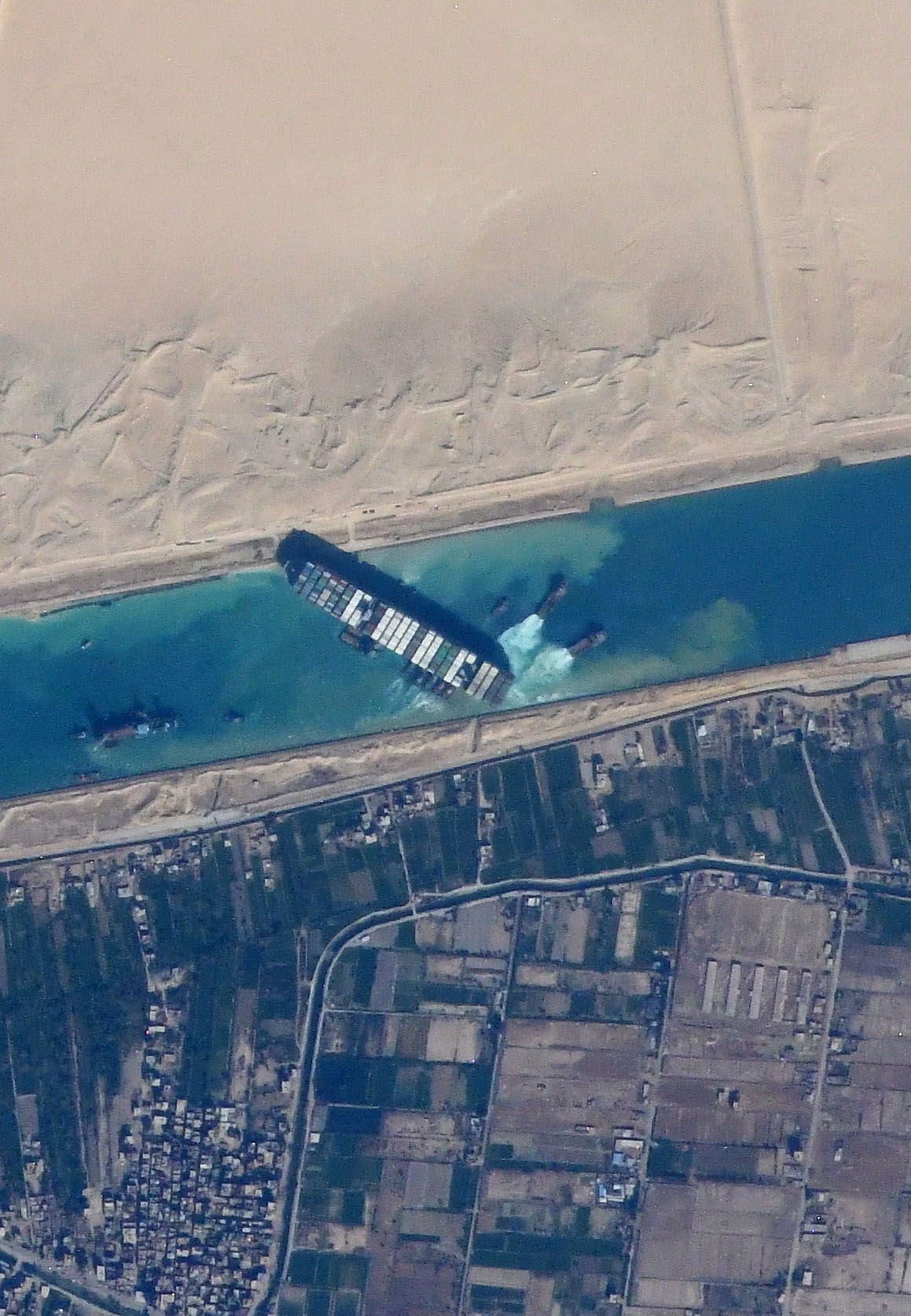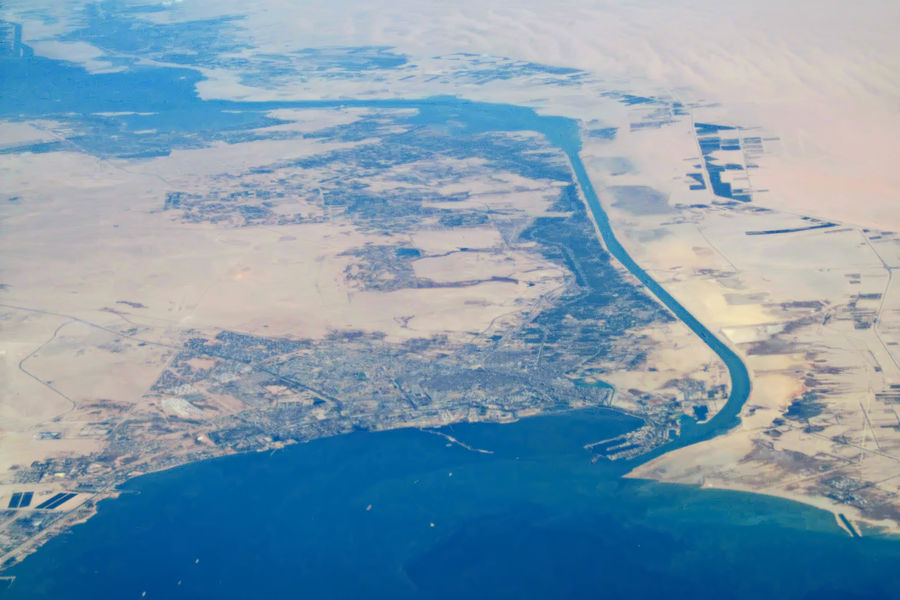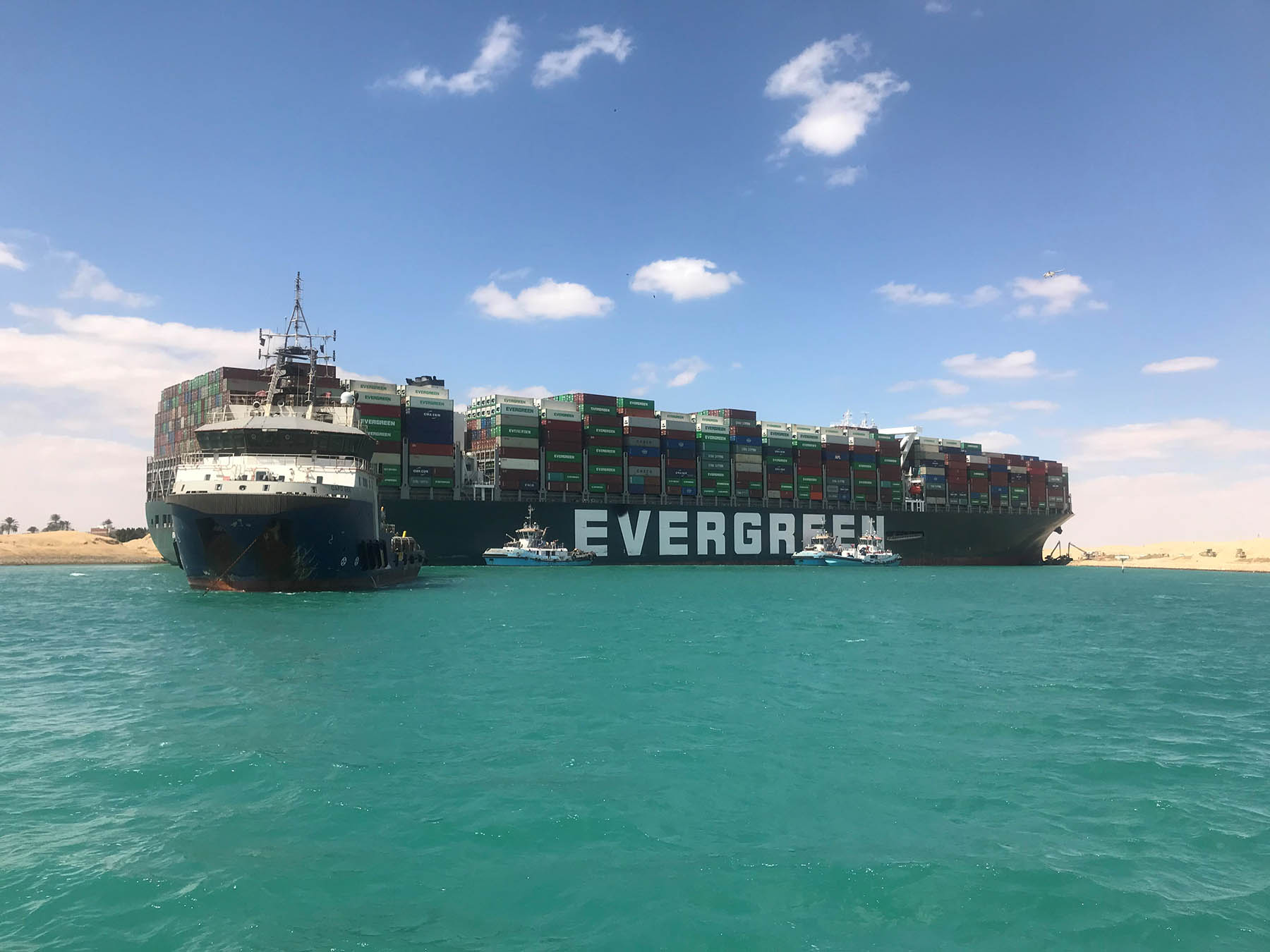
Egypt's Suez Canal is used to transport about 12% of the world’s trade — in 2020 18,840 ships passed through the canal. So when the giant container ship Ever Given became stuck in the canal on March 23, this crucial link in the global supply chain immediately became unusable. The ship’s six-day grounding led to a pileup of more than 400 vessels and stalled an estimated $9 billion worth of trade a day. The Ever Given was freed on March 29 — but freeing the ship from the morass of legal issues that has followed looks like it will take much longer.
The Suez Canal has a long history. It opened in November 1869 at a cost of 500 million francs. Though it was built by the French, one of the great ironies of the canal’s early history is that the British — who had long attempted to block the project — wound up controlling it after just a few decades. Later, the canal was nationalized by the Egyptian government in 1956 and expanded and widened in 2015.
The Ever Given, built in 2018 by Japan-based Imabari Shipbuilding, is one of the largest container ships in the world. At 1,300 ft long and weighing more than 220,000 tons, the massive vessel is capable of carrying more than 20,000 twenty-foot equivalent units.
Ever Given was en route from Malaysia to Rotterdam, Netherlands, when it ran aground in the canal the morning of March 23, just 3.7 mi past the southern entrance of the Suez Canal. The vessel “rammed herself into Asia and put her stern up on Africa,” says Salvatore R. Mercogliano, Ph.D., an associate professor who specializes in maritime history and policy at Campbell University in North Carolina. Mercogliano is also a licensed merchant marine deck officer and adjunct professor at the United States Merchant Marine Academy.
Ungrounding the ship
The Suez Canal Authority first attempted to free the vessel with its own tug ships, but the tugs weren’t “big enough to move a 1,300 ft, 200,000-ton vessels off two fixed points of land,” Mercogliano explains.
A small fleet of dredgers and tugs from both the canal authority and private contractor SMIT Salvage, which had been retained by the vessel’s operator, had to rotate the ship counterclockwise, Mercogliano says, removing sediment from the port bow side and the starboard stern side to dislodge the ship.

In a press release, Boskalis, the Dutch firm that owns SMIT Salvage, noted that the vessel was "successfully refloated” on March 29 at 3:05 p.m. local time. Freeing the ship took 11 harbor tugs and two powerful seagoing tugs. Mother Nature lent a hand: a king tide helped lift and free the boat.
But essential to the effort were dredgers, which moved approximately 1 million cu ft of sand. It’s uncommon for dredgers to be used to free stuck vessels — usually tugboats are able to get the job done. "It's pretty unique to have the dredgers as the heroes,” says Bill Hanson, the senior vice president of government relations for Houston-based Great Lakes Dredge & Dock Co. LLC.
Great Lakes worked on the Suez Canal’s 2015 expansion. In an interview with Civil Engineering, Hanson and colleague Garrett Gibson, the vice president of the Gulf Region and the former Middle East Area manager, speculate that one method the salvagers could have used to determine where to dredge was a combination of sonar-based surveying systems and divers to map the underwater topography and figure out the best way to deploy the dredgers.
Vessels suffer from two types of stresses, says Mercogliano: sagging, where a vessel sags in the middle, and hogging, where it dips at the ends. Container ships tend to hog, he says, drooping down a bit at the ends because their midsections, where all the containers are stored, are so “big and fat.”
“When you run aground, you remove that stress,” Mercogliano says. Container ships are “designed to be flexible. What (they) hate more than they anything else is to be rigid. Even more than that, they hate going against their natural stresses.”
Salvagers were concerned that if the dredging work went too quickly, the vessel could be damaged. But, with more ships queuing up outside the canal, the canal authority wanted the work to proceed as quickly as possible. “Strong as those vessels are, they're actually pretty fragile,” says Hanson. It’s possible to crack the hull or cause structural damage. “If it tips over, even if it doesn't tip all the way,” says Hanson, “you can lose containers in the water, and that becomes a problem for the other ships that want to come in.”
How did it happen?
Investigators are still trying to determine the cause of the grounding. According to the BBC, the Ever Given’s Germany-based technical management firm, Bernhard Schulte Shipmanagement, blamed the grounding on high winds and ruled out mechanical errors. But the canal authority refused to discount the possibility of human or technical errors and told reporters that the canal had never been closed because of bad weather.

The ship was also reportedly moving at a speed of around 13 knots instead of the more typical 7-9 knots of ships navigating the canal zone. Moving faster is common and does provide better helm control — the Maersk Denver, traveling behind the Ever Given, was also reportedly moving faster than the 7.6-knot speed limit — but mistakes are harder to correct. Lastly, it’s common procedure for canal authority pilots to board vessels passing through the canal and advise the vessel’s captain for the 16-hour transit through the canal, though the captain still retains ultimate control of the ship.
Jean-Paul Rodrigue, Ph.D., is a professor in the department of global studies and geography at Hofstra University who specializes in transport, logistics, and global freight distribution. He is skeptical that we should draw too many conclusions from the incident. “It's a singular event,” he says. “It does not appear to be linked within any particular flaws within the operations of the canal itself.”
Future implications
The blockage had some minor impacts on European supply chains after the Ever Given was removed — most of the cargo heading through the canal is bound for Europe — but no impact on the U.S. supply chain, according to Rodrigue. This is because only about 15% of the traffic handled by the East Coast of the U.S. transitions through the Suez Canal.
An article in American Shipper, citing supply chain management software provider E2open, claimed that the Ever Given was approximately 85% loaded — about 18,300 containers, according to published reports — and that the major product categories on the ship included “electronics, machinery and parts, household goods, furniture, and footwear.”
Sorting out who is to blame and who will be forced to pay could drag on for a while. The Ever Given is still in the canal. After being towed to the Great Bitter Lake, in the middle of the canal, for inspection, the canal authority impounded the vessel on April 13, claiming the ship’s operator, Taiwan-based Evergreen Marine Corp., owed the authority $916 million for expenses incurred during the rescue — including $300 million for damage done to the canal's reputation. (The ship is owned by Japanese holding company Shoei Kisen Kaisha, a subsidiary of Imabari.)
“It is very unusual and very peculiar … the canal authority seizing a ship on an event that seems to be singular, when a pilot of the authority was on board — and you put the responsibility on the carrier,” says Rodrigue. “That took people a bit by surprise.”
At publication time for this article, Evergreen Marine was seeking claims against the ship of $115 million. Three of the ship’s crew members have been allowed to leave — the remaining 25 crew members aren’t under arrest, but the canal authority requires a crew on board to maintain the ship. So, for the moment, most of those crew members are stuck, as is the cargo. “The Egyptian court is not going to rule against the Suez Canal Authority,” says Mercogliano. “It's all a matter of how (much) money the Egyptians will accept to release the vessel.”
Experts do believe there will be changes made to avoid another potential blockage such as this one. "Once it’s compromised, the supply chain gets concerned and starts looking for alternatives,” says Hanson. “The Suez Canal will likely respond aggressively to win that confidence back again.”
It’s unclear what the canal authority might do to reduce the likelihood of large vessels getting stuck in the canal. It could issue high-speed wind advisories or revise procedures about ships entering the canal during challenging weather; it could require ships to pull off to the side during high winds or storms; and it could keep larger salvage at the ready. (The Suez Canal Authority also did not respond to requests for comment.)
The most obvious solution would be the most expensive: widen the entire canal for two-lane traffic. The canal authority, Rodrigue suggests, “could go to the World Bank or major financial institutions and say, ‘We want to mitigate this risk, and the best way to mitigate this risk is to complete the doubling of the Suez Canal.’” He adds, “I would use this as opportunity to justify the expansion.”




